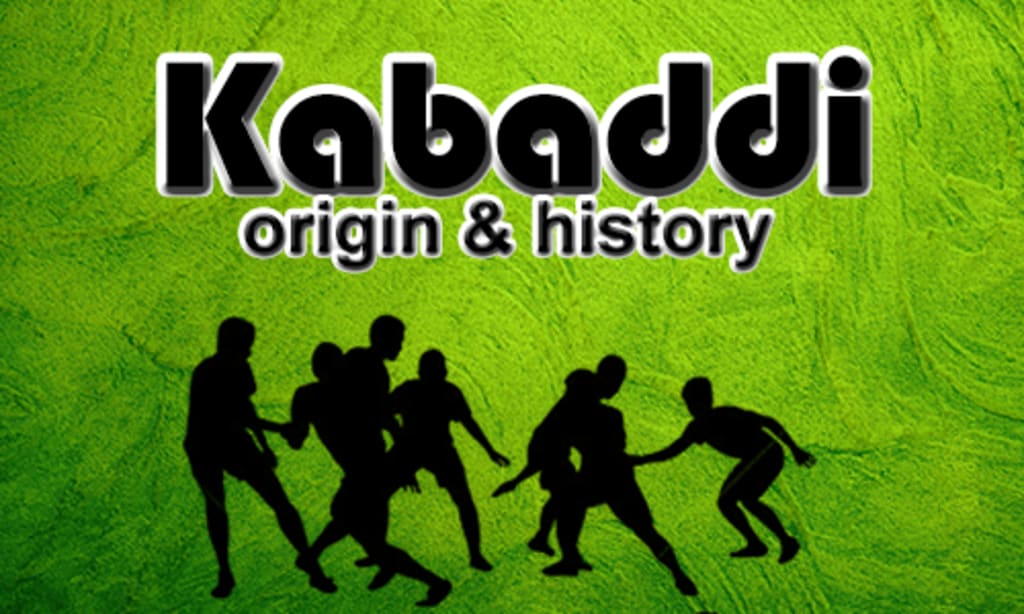
Introduction to Kabaddi:
Kabaddi, a traditional sport with roots deeply embedded in South Asian culture, has a fascinating history that spans thousands of years. From its humble origins as a rural pastime to its current status as a globally recognized and competitive sport, kabaddi has undergone significant transformations. Let's delve into a comprehensive history of kabaddi in a step-by-step manner.
Step 1: Ancient Origins
Kabaddi's journey begins in the annals of ancient Indian history, where mentions of the sport can be found in texts such as the Mahabharata, dating back over 4,000 years. Initially known by various names, including "Ha-du-du" in ancient Tamil literature, kabaddi served as a form of entertainment and physical exercise in local communities.
#Stp 2: Traditional and Cultural Significance
Kabaddi was not merely a sport but an integral part of rural life. Played in villages, it became a symbol of strength, skill, and camaraderie. During festivals and celebrations, kabaddi took center stage, providing a source of amusement and physical prowess.
Step 3: Evolution of Rules and Formats
As kabaddi gained popularity, different regions developed their variations of the game, each with unique rules and playing styles. These variations included Amar and Suranjeevi in Punjab, Sanjeevani in Maharashtra, and Gaminee in Rajasthan. This diversity contributed to the rich tapestry of kabaddi as a cultural phenomenon.
Step 4: Institutionalization and Modernization
The formalization of kabaddi took a significant leap with its introduction into school curriculums. Schools began organizing kabaddi matches, fostering a sense of competition among students. Inter-college competitions followed, creating a structured platform for players to showcase their talents.
Step 5: National Recognition
In 1950, the All India Kabaddi Federation (AIKF) was established, marking a crucial moment in kabaddi's journey. This organization played a pivotal role in standardizing rules and regulations, providing a foundation for the sport's national recognition. The first National Kabaddi Championship was held in 1952 in Maharashtra, adding to the sport's credibility.
Step 6: International Expansion
Kabaddi made its international debut when it was included in the Asian Games in 1990. This exposure allowed the world to witness the unique and intense nature of the sport. India, with its strong kabaddi tradition, dominated the competition, further cementing the country's reputation as a kabaddi powerhouse.
Step 7: Professional Leagues and Global Popularity
The landscape of kabaddi underwent a paradigm shift with the introduction of the Pro Kabaddi League (PKL) in 2014. This professional league, featuring a franchise-based format, injected new life into the sport. With star players, strategic gameplay, and a modern presentation, PKL brought kabaddi to the forefront of the Indian sports scene. The league's success inspired the creation of similar kabaddi leagues worldwide, contributing to the sport's global popularity.
Step 8: Modern Era and Olympic Aspirations
In recent years, there has been a concerted effort to secure Olympic recognition for kabaddi. Advocates for the sport believe that its widespread appeal, simplicity, and competitive nature make it a strong candidate for inclusion in the Olympic Games. While this aspiration remains ongoing, kabaddi continues to evolve, attracting a diverse and global fanbase.
Step 9: Global Growth and Participation
Kabaddi's popularity extends beyond the borders of South Asia. Countries like Iran, South Korea, and Bangladesh have embraced the sport, contributing to its global growth. International competitions, including the World Kabaddi Championships, showcase the prowess of players from various nations, highlighting kabaddi as a truly global phenomenon.
Step 10: Continued Evolution and Future Prospects
As kabaddi moves forward, it faces new challenges and opportunities. The sport's continued evolution is evident in its integration with technology, increased professionalism, and efforts to enhance the viewer experience. With ongoing initiatives to promote kabaddi at the grassroots level and expand its global footprint, the future looks promising for this ancient yet dynamic sport.
In conclusion, kabaddi's journey from ancient origins to a globally recognized and competitive sport is a testament to its enduring appeal and cultural significance. The sport has evolved through centuries, embracing tradition while adapting to the demands of the modern era. Whether played in rural villages, national championships, or professional leagues, kabaddi continues to captivate audiences worldwide with its unique blend of strength, strategy, and tradition.
About the Creator
Enjoyed the story? Support the Creator.
Subscribe for free to receive all their stories in your feed. You could also pledge your support or give them a one-off tip, letting them know you appreciate their work.






Comments
There are no comments for this story
Be the first to respond and start the conversation.